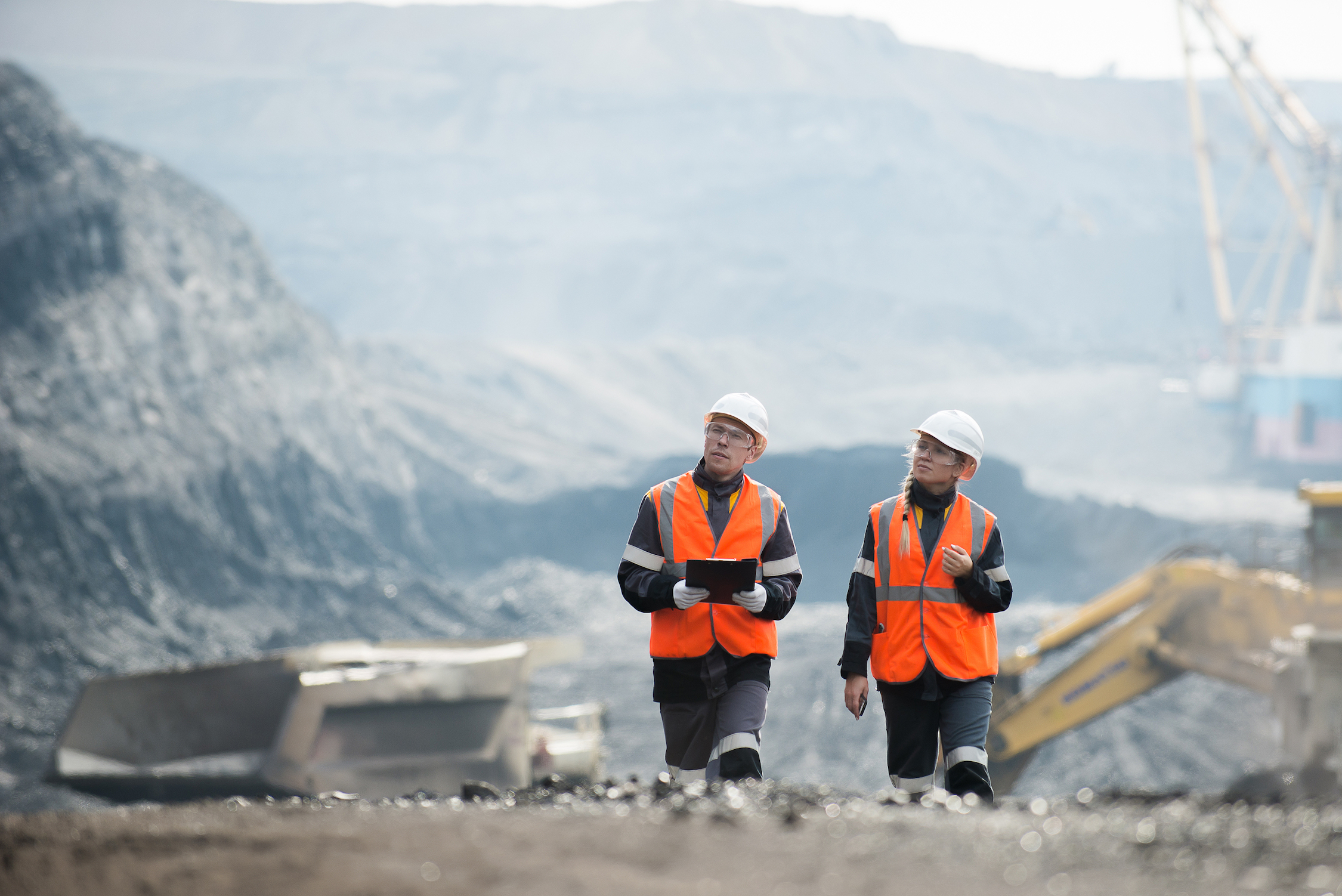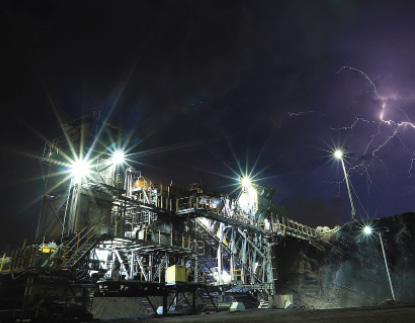This trio of hurdles may surprise you, according to Vaisala’s Frank DeFina in this NAM exclusive.

Mining faces an era of reinvention, with decision-makers no longer depending on traditional portfolios and practices to create value. Almost 40% of mining CEOs believe their companies will not be economically viable in the next decade if they continue their current trajectories.
Given the industry’s necessity for electrification, future technologies and combatting energy inflation during a global crisis, harmonizing the pursuit of valuable resources with preserving our environment is a critical industrywide goal.
With 35% of mining CEOs feeling highly or extremely exposed to climate-related risks, miners must balance boosted production to meet the rising demand for critical minerals and other commodities required for our clean energy transition with reduced carbon emissions. From flooding to lightning to air pollution, severe weather events and corresponding environmental impacts create challenges, hamstring mine productivity, put employees in harm’s way and can result in costly downtime and delays.
As the frequency and impact of severe weather and environmental events increase, industry players must find innovative ways to navigate evolving ecological impacts and sustainable mining needs. However, many tactics that worked in the past are now less successful regarding the industry’s most impactful environmental concerns.
Enter advanced weather systems that provide precise and dependable data to improve situational awareness. Adopting a hyperlocal approach to weather monitoring enables mine operators to determine when – and how – to mitigate weather-related danger, prevent accidents and confirm seamless operations.
Disrupting the flow of operations: Flooding, landslides and runoff water
We all know about the significant safety and environmental challenges flooding, landslides and runoff water presents in mining operations in regions characterized by steep terrain or inadequate drainage systems. But these hazards can result in operational disruptions, contamination of local water sources and challenges meeting stringent government regulations at mines across North America.
Heavy rainfall can trigger washed-out roads, tailing dam failures, landslides and, in the most severe cases, a complete mine shutdown due to severe flooding. A sudden deluge can create perilous conditions from rapidly moving water, rising water pools in excavated areas or underground tunnel inundation, significantly increasing the risk of accidents and injuries for mine personnel.
Monitoring slope stability is paramount during precipitation-heavy events because heavy rainfall can precipitate landslides, potentially burying or trapping workers. Plus, flooding increases the likelihood of runoff water carrying sediments, chemicals and pollutants to local water sources. This contamination negatively impacts biodiversity and poses possible health risks to nearby communities.
An often-overlooked challenge linked to increased moisture is precipitation-induced fog and potential for icing and freezing on roads in operations across the northern U.S. and Canada.
Together, these environmental impacts create safety risks that can significantly interrupt efficient mining operations, leading to substantial downtime and higher operational costs for companies.

Confronting mining’s risks with electric skies and raging fires
Regardless of location, many North American operations face lightning-, thunderstorm- and wildfire-related risks.
Open pits and surface areas are particularly vulnerable to lightning strikes during thunderstorms. Lightning can damage heavy equipment or endanger safety by causing explosions, fires, power outages and structural damage. Lightning strike-related impacts can ignite flammable materials, leading to production disruptions and increased critical system repairs and replacement costs. Thunderstorm-fueled high winds, heavy rainfall and flash flooding can force workers to evacuate, stopping operations for safety.
Wildfires are a considerable environmental challenge, significantly disrupting sustainable mining operations, transportation and supply chains. In wildfire-prone regions, mines not only face the safety-centric risks of fires spreading to sites, but wildfires can also ignite materials, releasing hazardous air pollutants. If there are incoming wildfires or severe weather conditions, mine operators may have to evacuate workers or halt operations until the situation passes or necessary repairs are made. This downtime can delay production schedules and result in additional costs.
To prevent risks related to thunderstorms, lightning and wildfires, operators should establish comprehensive safety protocols and emergency response plans to evacuate workers or halt operations until safe.
Clearing the air: Addressing pollution and dust challenges
Air pollution and dust directly impact mine workers, surrounding communities and the region’s broader sustainability goals. Understanding these environmental challenges is consequently crucial for fostering responsible mining operations.
One of the industry’s most prominent areas of unpredictability is measuring wind sheep and direction changes. Wind can disrupt blasting activities, propelling dust and gas emissions like carbon monoxide and sulfur dioxide into the air, swirling around and ultimately settling in nearby areas. This air pollutant dispersion threatens local plant and animal species by hindering growth and adversely affecting adjacent water bodies and soil biodiversity, further jeopardizing aquatic life and soil quality.
Mining companies across North America must comply with air quality regulations and industrial hygiene standards to avoid legal consequences, mitigate potential fines and protect their reputations – and that of the industry at large. To effectively manage and reduce air pollution and dust risks, sustainable mining demands comprehensive air quality monitoring.
Weathering the environment: How monitoring solutions revolutionize sustainable mining
Preventing accidents while ensuring sustainable operations remains a priority, even in the most challenging conditions. From heavy wind and rain to lightning, wildfires and other ramifications, hyperlocal weather insights can help stem the negative impact of our environment on mines throughout North America.
Although traditional weather forecasts provide some valuable information, the precision and specificity of hyperlocal weather measurements transform how forward-thinking mining organizations prepare for and respond to severe weather events and air quality challenges. A LIDAR providing accurate wind profiles over the site and comprehensive weather station that accurately measures wind, solar radiation, temperature, humidity and pressure, precipitation, present weather and visibility, air quality, water level and other environmental parameters impacting operations, decision-makers industrywide can anticipate difficulties and take action to safeguard personnel and ensure operational efficiency.
Leveraging accurate hyperlocal information enables decisionmakers to create alerts notifying personnel of impending weather risks, then plan and adapt strategies as necessary to ensure safety and reduce downtime and costly disruptions. Consider automated lightning alerts built around the location, time and type of lightning. Incorporating lightning detection software into weather systems allows personnel to create alerts, proactively evacuating staff or continuing work if the storm does not pose imminent danger.
Whether calculating tailing dam evaporation, generating automated lightning-proximity alerts or conducting other vital operational tasks, decisionmakers need hyperlocal insights to maximize worker safety and minimize downtime.
As the industry strives to balance the impact of resource extraction with sustainability for future generations, modern weather solutions and hyperlocal insights help fortify this delicate equilibrium. Hyperlocal weather data drives informed decision-making so that mine owners and operators can protect their employees and local ecosystems, ensure compliance with environmental regulations, and confront environmental challenges while upholding the principles of responsible mining in our era of sustainability. At the end of the day, modern weather insights are indispensable in shaping a future where public awareness of mining’s importance is high – yet not as prominent as the demand for a greener future.
About the author: Frank DeFina is a business development manager at environmental and industrial measurement firm Vaisala. He is a graduate of the University of Pittsburgh and holds a certificate in weather forecasting from Pennsylvania State University; he also served as a weather forecaster in the United States Air Force.
